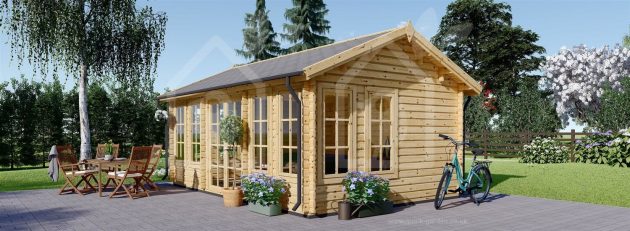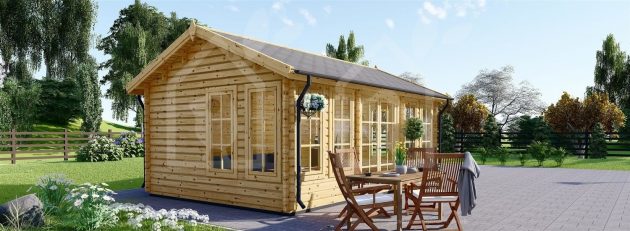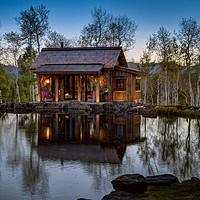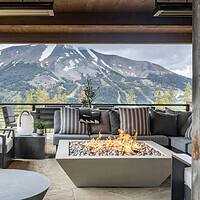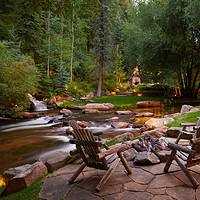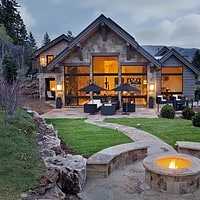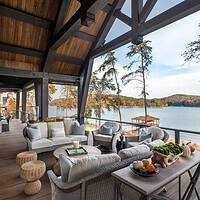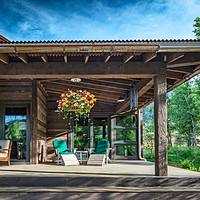If looking for additional space in your home, but don’t have the money to build an extension, a garden room might be just the solution you need. A garden room can be designed for a flexible space or specific use depending on the owner’s needs. These builds come in different shapes and designs from bespoke builds to off-the-shelf packages. All you need to do is identify the best design for the same. Several essential factors such as heating, power, insulation, and even internet connection ought to be factored in to help make it feel like a part of your home. The other best thing about this is that you don’t necessarily need planning permission to build a garden room.
A garden buildings create the ideal space for an art studio, home office, or even where teenager’s hangout during their free time. It also provides an inexpensive solution for anyone that needs the extra space, but without the budget for a loft conversion, extension, or move house. It also isn’t just about creating the extra floor space; it offers both mental and physical separation from the main house. This comes in handy if you want to be more productive or for creating thinking. Here are a few tips on how to build a garden house.
-
Planning and Positioning
You can create almost anything from a garden room. This ranges from a home office to a home gym. While it can be anything you want, your budget and available space in the garden are the two key determinants. You’ll also want to consider how the garden house will be positioned and its appearance as well. You can go for a more traditional-style garden house, a contemporary glass box, or a sleek one for that matter. Natural materials are mostly recommended for they blend well with the rest of the house and the garden too.
You don’;t want the room to seem/feel like a big shed. It needs to have all the features of a well-built and designed room. The foundations, insulations, and other aspects need to be just right. Interlocking plinths, slab, or concrete are the most preferred foundations for a garden room.
As long as the garden room isn’t meant for accommodation, you then don’t have to worry about building regulations. The room shouldn’t however take up more than 15 sq. meters; else you’ll need a permit. Log on to the Planning Portal for more information on this.
Be sure to choose just the perfect spot for the garden room – this can be a sunny or shady spot in the garden. Positioning however matters a lot; this is because a south-facing, fully glazed room may overheat, while one placed in a dark corner may be too cold or hard to keep warm. That said, it would be advisable to consider the room’s angle before taking on the construction of the same. In addition to this, a full-glazed room might what you are looking to achieve. Nonetheless, this makes everything visible; one of the reasons you need to ensure valuables and storage is hidden from direct view.
According to Paul Archer, the director at Paul Archer Design, orientation is a key consideration when designing a garden room. Whether the room will be facing the sun or not, it might be a good idea to integrate some cover to it. Paul says integrating the room with the existing architecture would be a wise idea.
Access to the garden, and especially where materials and machinery have to be brought in is another factor you ought to consider. You can, however, have the garden buildings delivered in smaller pieces and components, especially if accessing the garden room is through the house, says Nick Forester of Norwegian Log.
-
Bespoke Vs Off-The-Peg
If looking to include a bathroom, kitchen, water and waste services in the garden room, you might then want to go for a build tailor-made by an architect. This option eliminates the hustle of having to deal with utilities and other guidelines that come with the same. The building company gets to deal with all that while giving you the freedom to choose where the wall plugs are to be positioned, and your preferred heating method.
A modular design or a self-assembly model is the most affordable option you can go for. You can get a complete package of these, whereby the package is designed to be erected under acceptable development. The package comes complete with insulated floors and walls, window and door options among other choices of add-ons. Adequate heating and insulation are recommended if planning to use the garden room throughout the year. You will need a well-lit pathway to the main house as well.
If looking for an expensive option for the garden room, you’ll then want to go for the bespoke design. The cost of the room depends on the quality of material, size, and finish on the same. Basic bespoke design kits range start at £2,000, with the most luxurious and customizable designs going for a little over £30,000. This is approximately £1000 per square meter.
-
Utilities and Maintenance
Water, electricity, and waste are some of the key factors to consider if managing the project. You’ll want to discuss the floor plan and how you will use the room with the electrician to ensure they install the right light fixtures, as well the number of sockets. Any underground cables need to be buried more than 30cm deep in the ground to avoid damage while gardening. The cost of electrical installations may cost a little over £600. You can however choose to use solar power instead. You’ll need solar panels, backup batteries and everything else required to take advantage of the renewable energy.
You will need 2 separate sets of pipes for cold-water supply. One set is meant for fresh water with the other one for waste removal. These should be laid 75cm in the ground. The plumber should identify the best way to get rid of wastewater. Should you need a pump station, you’ll then have to budget for the same. A small hot-water heater might come in handy in the garden room too – if you aren’t prepared to invest in a boiler. Be sure to spend at least £500 on the sink, £2000 for loo installation and a macerator.
-
Services
Whether using the garden house as a casual summerhouse, you will need electricity in one way or the other. Electricity provides attractive external lighting for both the structure and the garden. You’ll need electricity if looking to use the house throughout the year – to power plug sockets, lighting and provide heating. Extending the home’s electrical circuit using armored cables would be the best approach. You can also run a network cable to the room for internet access. Be sure to use a certified electrician for this.
-
Heating Options
For the garden room to be usable all year round, you will need some form of heating. Unless the room is near the main house, a gas heating system wouldn’t be an economical approach. Adequate insulation would be your best bet for a comfortable garden room.
You can invest in an underfloor heating kit for £340 for the 200W kit. The package includes a digital thermostat and insulation boards. You might also want to opt for a small hot air heat pump (renewable), e.g., Greensource by Worcester Bosch for around £1,500.
Consider installing a wood burner if looking to heat a bigger room. Proper understanding and compliance of Building Regulations will be required should you choose to use a wood burner.

